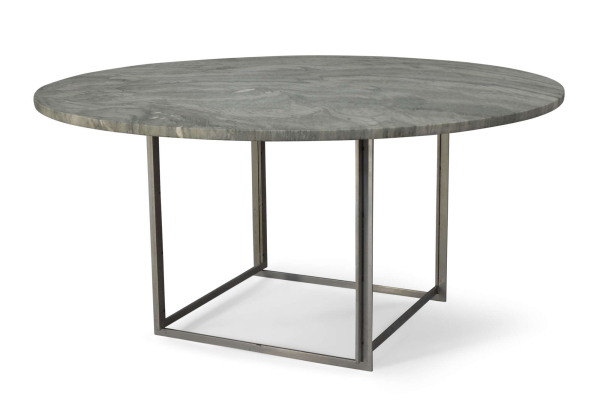Designer Poul Kjærholm was born in Østervrå in Denmark in 1929. He began an apprenticeship with Gronbech in Hjørring as a carpenter and cabinetmaker in 1948, which gave him a wealth of practical design experience which would inform his entire career. In 1952 he attended the Danish School of Arts and Crafts in Copenhagen and a year later he married his wife, the architect Hanna Kjærholm. His final-year project at the School of Arts and Crafts was his PK25 (or ‘Element’) chair, which showed the characteristic hallmarks of what would become his famous style (namely a continuous, curving piece of steel which forms the foundation of the structure).
Himself just a recent graduate, in 1955 Kjærholm took on a role as an instructor at the School of Furniture in the Academy of Arts in 1955. He became the assistant at the Royal Danish Academy of Fine Arts in 1959 and in 1973 Kjærholm was appointed the head of the Institute for Design in 1973, becoming a professor in 1976.
Unlike most Scandinavian designers before him, Kjærholm liked to use construction materials – particularly steel - as the base of his designs (as opposed to more traditional wooden designs which had become synonymous with Danish-designed furniture around the world). Kjærholm liked to combine steel with natural materials, striking a balance between the man-made and the organic to create designs which felt truly harmonious.
The artist was inspired by the likes of Marcel Breuer, Ludwig Mies van der Rohe, and Le Corbusier, all of whom were concerned with reducing designs down to their most simple, practical, and ideal forms. The functional clarity of his designs was of the utmost importance to Kjærholm who explored the potential of various materials and their combinations. His attitude to furniture design is architectural in many ways. Like Le Corbusier before him, Kjærholm was preoccupied with how people would interact with his designs and what the minimalistic beauty of his work would bring to its users. The designer famously said of his practice - "What I want to express is the materials' own language”. His most recognizable design is perhaps his PK22 Chair – made of a stainless-steel frame and wicker elements. The PK22 Chair won the Grand Prix at the Triennale di Milano in 1957.
Kjærholm began to work with the furniture manufacturer Ejvind Kold Christiansen in Hellerup in 1955 – and the pair worked closely throughout Kjærholm’s lifetime. Under Christianson, Kjærholm produced his iconic PK plywood furniture series.
Kjærholm’s inclusion in the 1958 ‘Formes Scandinaves’ exhibition held in Paris brought him fame with an international audience. That same year, his PK22 chair won him the Lunning Award. Kjærholm won various awards throughout his career including the Grand Prize at the Milan Triennale in 1957 and again three years later in 1960, as well as the Danish ID Prize in 1967.
His designs are part of permanent collections throughout Scandinavia as well as in MoMA New York, and the Victoria & Albert Museum in London. Following Kjærholm’s death in 1980 in Hillerød, Fritz Hansen (with whom Kjærholm had worked in his early career) began producing and distributing the artist’s collection of works developed between 1951 and 1967. His designs are produced today, too, under the firm ‘Kjærholm Productions’ which was established in 2003 by the artist’s son.
